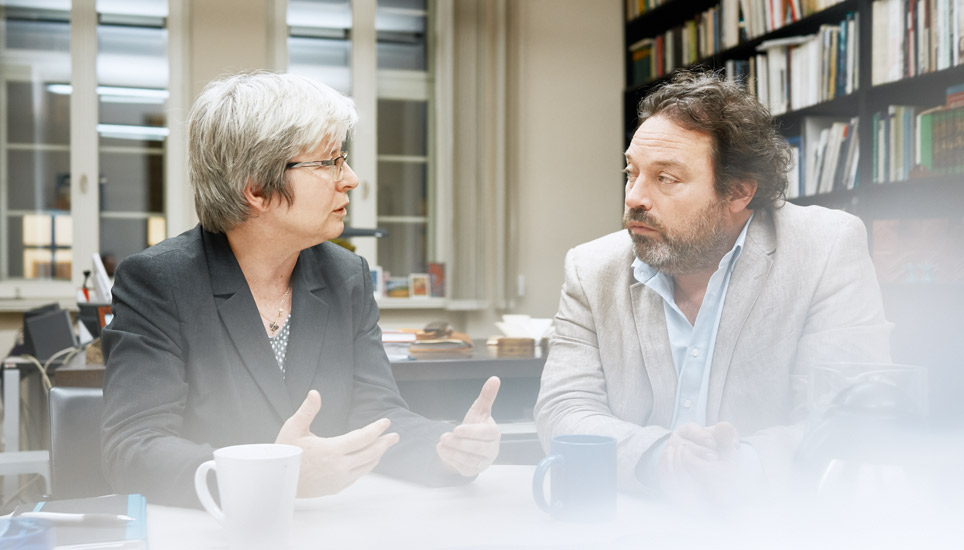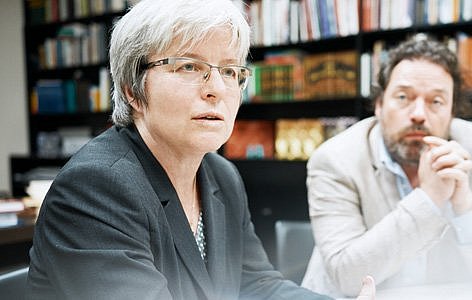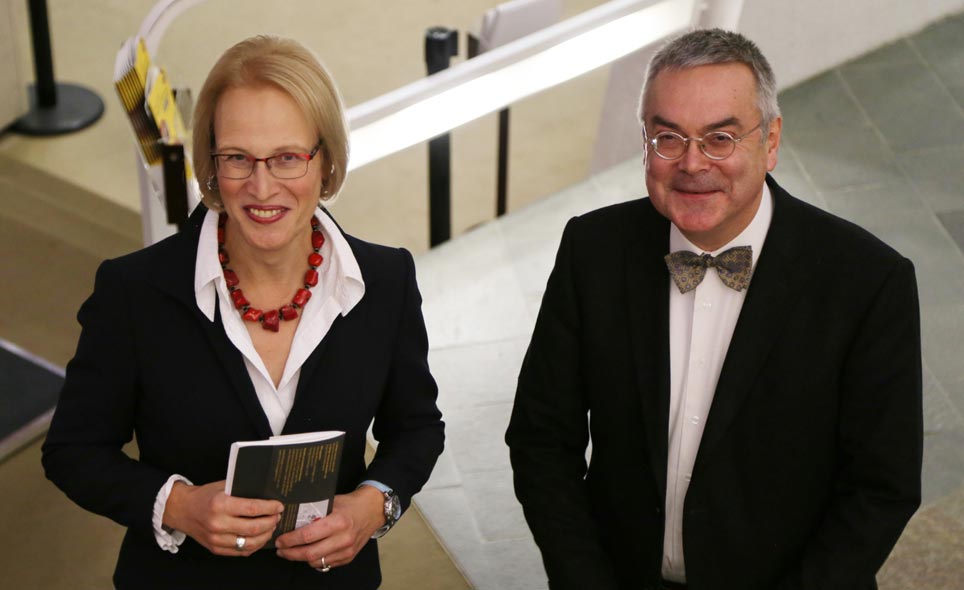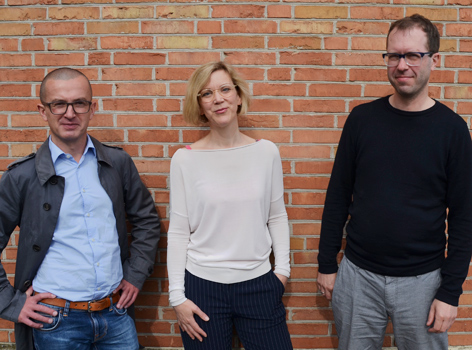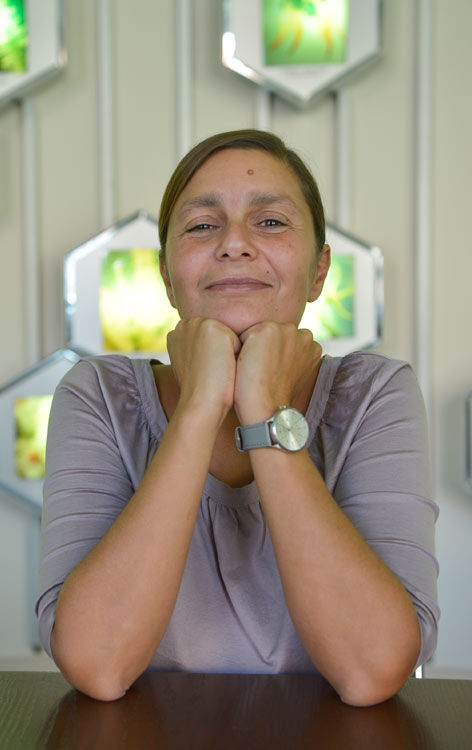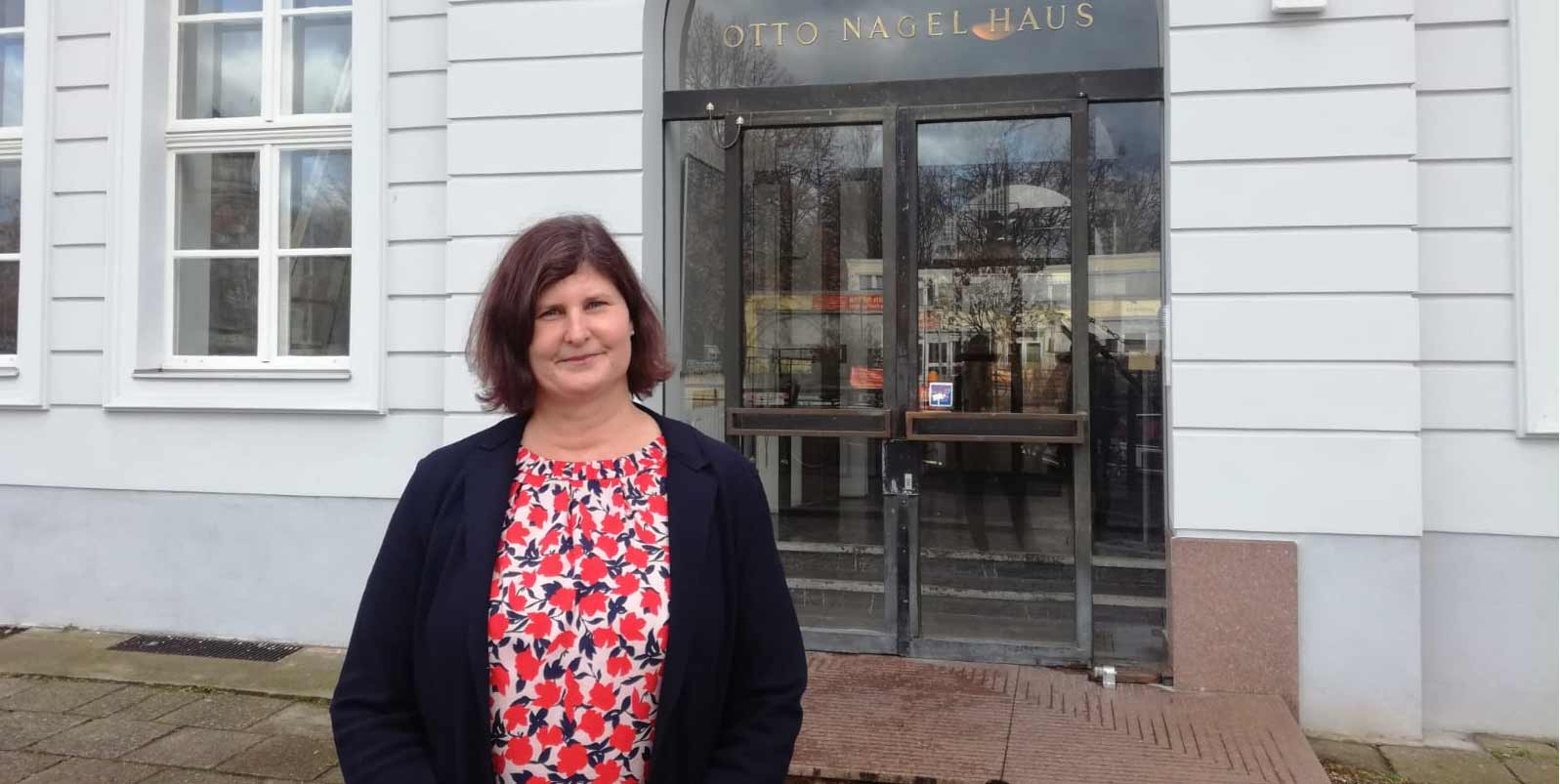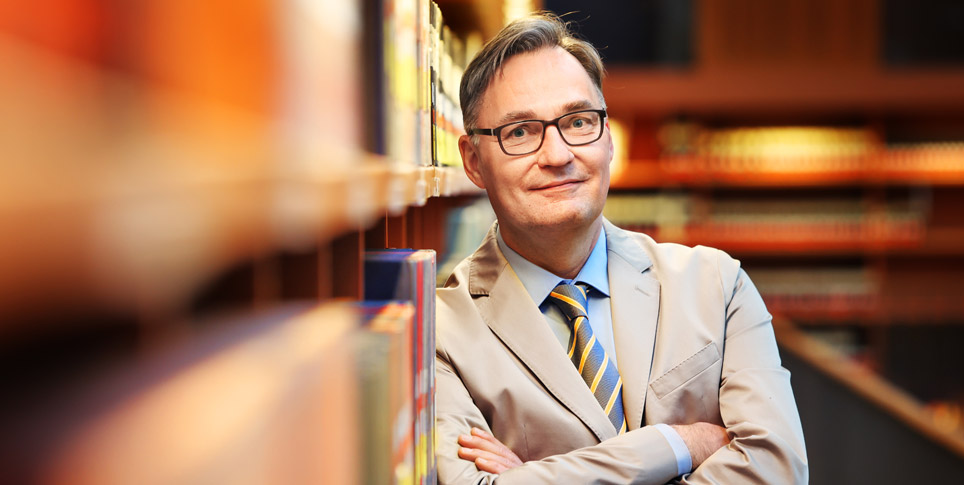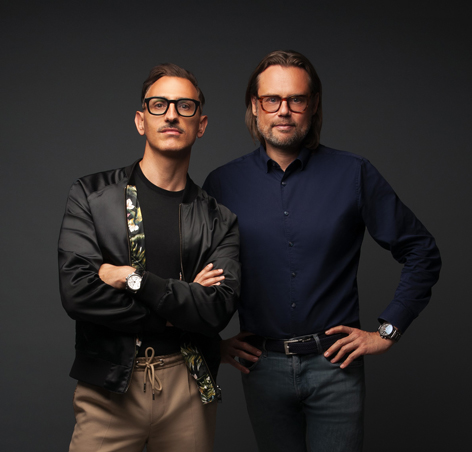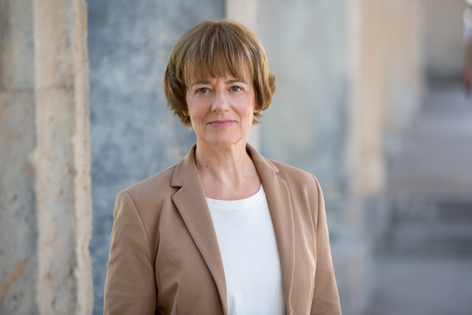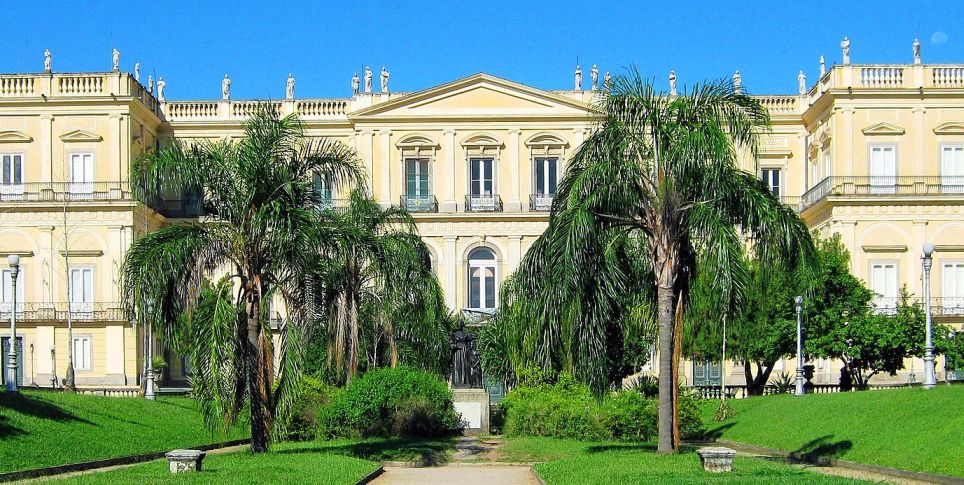A discussion with Barbara Göbel, director of the Ibero-Amerikanisches Institut, and Stefan Weber, director of the Museum für Islamische Kunst of the Staatliche Museen zu Berlin. On cultural differences, international cooperation, and why the Stiftung Preussischer Kulturbesitz could sometimes loosen up and embrace the unexpected.
“Cultural exchange enriches and adds to the knowledge of everyone involved” has almost become a platitude by now. But what exactly happens in a cultural exchange?
Barbara Göbel: Maybe we should take a step back and first talk about the term “culture.” Anyone who talks to people on the street about culture will quickly realize how difficult it is to get a grasp on the word. One person might think of the arts in the narrower sense, another might mean the differences he experiences in exchange with other people, and others might think of what people of one nation have in common when they speak about German culture, for example. As an ethnologist, I do not see culture as being a container of fixed meanings and values, I consider it a process and a practice. Cultural meaning comes from concrete actions and exchange. That is why at the Ibero-Amerikanisches Institut (Ibero-American Institute, IAI) we emphasize the diversity of cultures and the complexity of cultural processes.

Wissen muss reisen: Barbara Göbel und Stefan Weber im Gespräch © SPK / Benne Ochs
But don’t we need a very precise idea of the content and boundaries of our own culture? Isn’t every cultural exchange based on your own defined culture?
Stefan Weber: Of course, it’s important to know your own culture and history. But that makes you realize that your own culture is not a solid, self-contained vessel. The great cultural techniques don’t fall into our laps. Instead, they are part of a multi-layered process of global exchange. Your own culture never grows without another one. That’s why it’s difficult to define your own culture clearly. You quickly risk idealizing your own and making the other, different one even more foreign. Cultures are hybrid, plural, and always complex. But the current debate about dominant culture (Leitkultur)keeps us from seeing that and attempts to limit and define. We need to keep evolving and break through this view of “us and them,” which is still quite widespread.
BG: The perceptions of self and the other mutually define each other. I can’t include the others if I don’t know the position from which I’m viewing them. Culture and identity are inseparable. The added value of examining a different culture is that we acquire a better, more differentiated understanding of our own culture.
So looking for your own identity requires a broad view instead of deep roots?
BG: Identity always has something to do with roots and belonging. But these roots are not supposed to tie you down. They help you to define a position. After all, intercultural dialog is not possible without a position.
Isn’t this debate an expression of a deeply insecure society, in which interculturality is not just perceived as an enrichment but also as a threat?
SW: Of course, we all feel insecure. Thanks to the rise of right-wing populism, from natural catastrophes, global problems, or liberal markets. The issue is how to explain this. Who is to blame? For populists the problem is “foreign infiltration.” The problem is fear of diminishing social status. There is an unbelievable gap between poor and rich, and social inequality is growing – both here and in other countries. The feeling of foreign infiltration is particularly strong in the regions where there is not much contact with foreigners.
BG: The cultural insecurity that we are experiencing now has a lot to do with galloping globalization. Many people have the feeling that they can no longer influence societal development anyway. We need a debate about inequality, redistribution, and other forms of participation – and not about foreign infiltration. Inequality was always the highest in Latin America, but Europe is the region of the world where inequality is increasing at the fastest rate.
We need to be open and transparent, and promote exchange, so that society can make better use of our museums.
Which role can and must Stiftung Preussischer Kulturbesitz (Prussian Cultural Heritage Foundation, SPK) take on in this debate?
BG: The Foundation is a large association of collection-oriented institutions. It needs to examine the historical contexts of its collections in more detail. SPK is so diverse that it can potentially provide a better understanding of cultural differences. For the Ibero-Amerikanisches Institut (IAI), that means including the perspective of the other in its everyday work. We are increasing our interaction with Latin America and the Caribbean through visits by guest scientists, thus simplifying and improving international access to our collections.
What does this look like in detail?
BG: The IAI unites three closely interconnected fields of study. It houses one of the world’s largest libraries on Latin America, the Caribbean, Spain, and Portugal; it is a science center with research projects, visiting scientists, and its own publishing program; and finally, it is a cultural center with a variety of cultural events. We are trying to increase our internationality and cosmopolitan character in all three areas. This covers everything from multilingualism in communication to international cooperation in digitization.
SW: We need to be open and transparent, and promote exchange. For example, we are now sending people out to examine how society can make better use of our Museum für Islamische Kunst (Museum of Islamic Art). They are surveying groups such as associations and sports clubs. It’s a needs analysis – finding out where there is a need to work together with museums, even bypassing the usual exhibition formats.
How do we stay relevant for our society? The Foundation has the potential to facilitate a better understanding of cultural differences.
BG: Scientific knowledge is knowledge that can travel. That’s the nice thing! Science, including the humanities, culture, and social sciences, is truly international and lives from exchange. But that doesn’t happen on its own, it has to be organized. In the end that applies to the Foundation itself: SPK’s great potential lies in being a unique association of different institutions – museums, libraries, archives, and research institutions – under one roof. Knowledge needs to be exchanged here too. Maybe that should be made simpler than it is right now because of existing structures and specialization boundaries. We need more intercultural dialogue here too!
SW: Our curators still often exhibit territorial thinking. A lot of what we thought was taken for granted, cut and dried, is no longer of primary importance for young people or groups in society. We need to develop more momentum. Sometimes we are a bit slow. There needs to be more room to move here, to develop things. People wanted to be in on the design process. Tourists will keep coming but how do we remain relevant to our own society?
You mentioned the curators’ territorial thinking, but also people’s need to be more involved. What role can digitization play?
BG: First of all, digitization is a technology by which objects – texts, images, sound recordings, or three-dimensional objects – can move faster and have a greater range. It also allows us to overcome boundaries shaped over time, for example, those between text, image, and sound. It creates other opportunities for participation and leads to more co-management of collections, which in turn changes the roles of librarians, curators, and archivers. However, digital transformation does not necessarily lead to more democratization of knowledge.
SW: Digital is good, but it isn’t a guarantee of success. In our museum, the Museum für Islamische Kunst of the Staatliche Museen zu Berlin, we currently have 11,000 objects digitized and cataloged – everything online, everything open. A reason to be proud, when you know how much work this involved and yet I’m somewhat dissatisfied with the results. As art historians, we described the objects for a specialized scientific audience. Despite having been digitized, the objects are still inaccessible to the vast majority of society. We need to go beyond categorizing the objects based on art history and begin telling the stories that interest people. In one project, we are trying to include various levels of text in addition to the scientific analysis. In a catalog on the cultural heritage of Aleppo, for example, we want to include recipes and music. Everything that makes a region rich ought to be shown – and in such a way that it is interesting for a wide variety of people.
If we met again as a group in ten years, what would interest us the most? What would be the most burning question?
BG: Will we have managed to get the people who polarize culturally and want to re-nationalize the work of the institutions out of parliament?
SW: Yes, through our work! At least I hope that the discourse will not become more radical. I hope that in ten years, society can hold debates that contain subtle tones, too.
